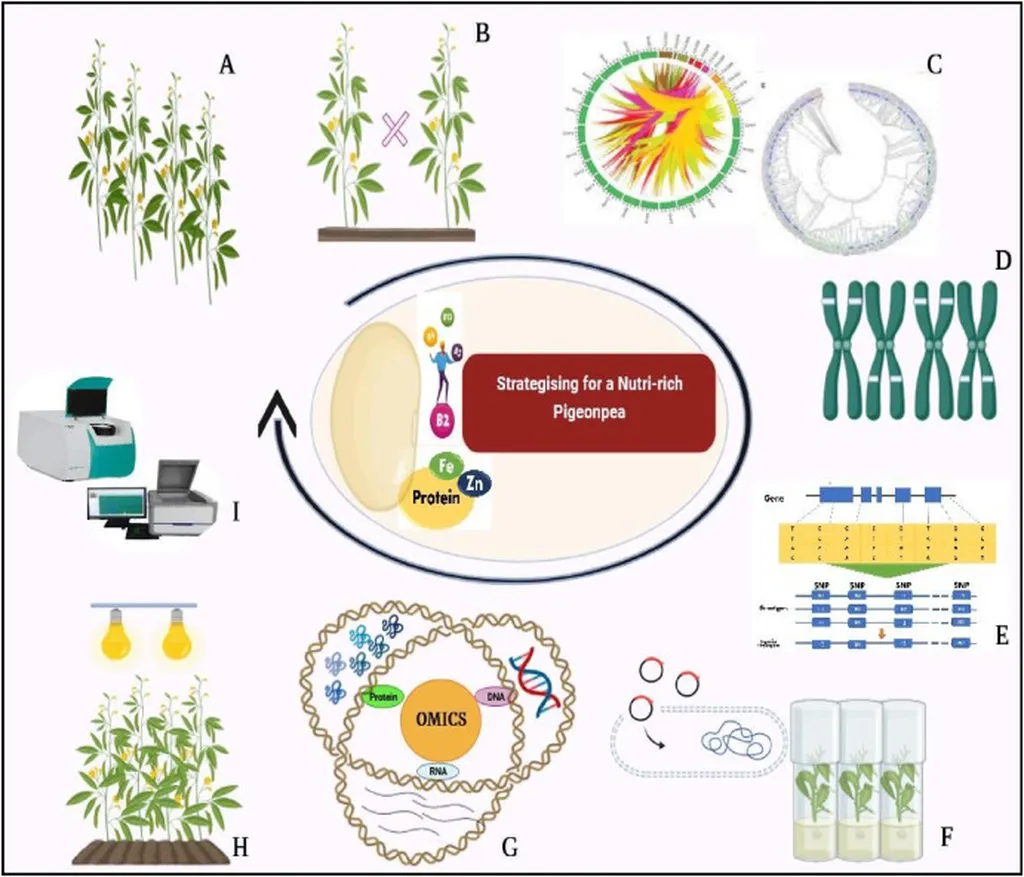In the heart of India, researchers are unlocking the secrets of pigeonpea, a humble legume with immense potential to revolutionize nutrition and agriculture. Sandeep Kumar Singh, a dedicated scientist from the Department of Genetics and Plant Breeding at Siksha ‘O’ Anusandhan in Bhubaneswar, Odisha, has led a groundbreaking study that could reshape the future of this versatile crop.
Pigeonpea, a staple in many diets, is valued for its high protein content and diverse culinary uses. However, its full potential has remained untapped due to limited understanding of its genetic diversity and nutritional quality. Singh and his team set out to change that, evaluating 16 vegetable-type pigeonpea genotypes for agronomic traits, nutritional quality, and genetic diversity.
Their findings, published in the journal “Cogent Food & Agriculture” (which translates to “Thoughtful Food & Agriculture”), reveal a treasure trove of genetic variation within pigeonpea. “We found significant genotypic variation in chlorophyll content, leaf area, plant height, and yield components,” Singh explains. This variation is crucial for breeders aiming to develop high-yielding, nutrient-rich varieties.
The study employed Start Codon Targeted (SCoT) markers to assess genetic diversity. These markers proved highly effective, with the highest polymorphism information content (PIC) value of 0.8397 recorded for SCoT-13. This genetic diversity is a goldmine for breeders, offering a wide range of traits to improve pigeonpea varieties.
Nutritional analysis revealed that vegetable-type pigeonpeas are packed with zinc and iron, essential minerals often lacking in diets. In contrast, grain types had more protein and calcium. “This variation in nutritional content is a significant finding,” Singh notes. “It underscores the importance of considering genetic background and developmental stage in breeding programs.”
The study also highlighted strong positive correlations among pod weight, pod length, and yield. This means that breeders can focus on these traits to improve overall yield. Broad-sense heritability was highest for 100 fresh pod weight, indicating that this trait is highly inheritable and thus a good target for breeding programs.
The implications of this research are far-reaching. By understanding the genetic diversity and nutritional quality of pigeonpea, breeders can develop varieties tailored to specific nutritional needs and environmental conditions. This could lead to improved food security and nutrition, particularly in regions where pigeonpea is a dietary staple.
Moreover, the study’s findings could drive innovation in the agricultural sector. “Our results suggest that parallel breeding approaches could be effective for improving both yield and nutritional traits,” Singh says. This means that breeders can work on multiple traits simultaneously, accelerating the development of superior varieties.
The research also highlights the importance of considering the developmental stage of the crop. Nutritional content varies from the green pod stage to the mature seed stage, a factor that breeders must consider when developing new varieties.
In the broader context, this research could shape future developments in the field of agritech. By leveraging genetic diversity and advanced breeding techniques, researchers can develop crops that are not only high-yielding but also nutrient-rich. This could transform agriculture, making it more sustainable and resilient in the face of climate change.
As we look to the future, the humble pigeonpea stands as a testament to the power of genetic diversity and advanced breeding techniques. With researchers like Sandeep Kumar Singh at the helm, we can expect to see significant advancements in agriculture and nutrition, benefiting millions of people worldwide.

